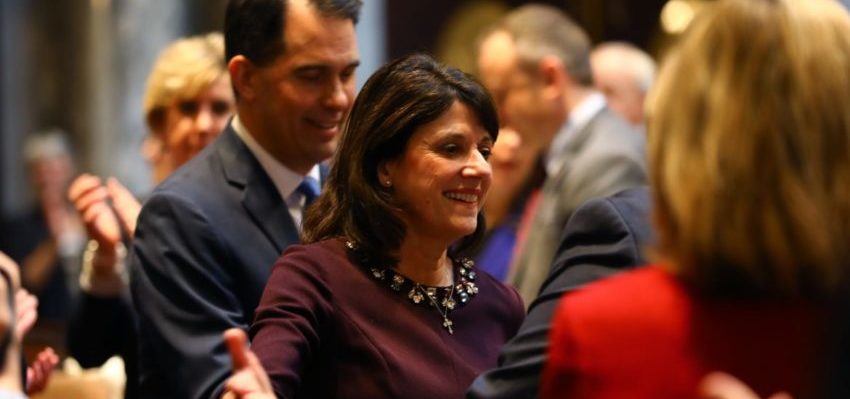
Dan O’Donnell is optimistic after last night’s primary but sees warning signs ahead of November.
August 15, 2018
Special Guest Perspective By Dan O’Donnell
In hindsight, it should have been obvious: The conservative grassroots in southeastern Wisconsin would lead as they have for years now. There would be no upset, no “wow” so long as the WOW counties had their say, and they did—powering State Senator Leah Vukmir to a resounding primary election victory over Kevin Nicholson.
Wisconsin Republicans became the model of conservative governance, not the dreaded “Republican Establishment” standing in the way of conservative reform instead of enacting it.
“Crucial Waukesha County” has been a running joke among pundits on election nights, but last night it proved just how crucial it is. As of this writing, Vukmir’s 22,005-vote margin of victory in Waukesha County made up approximately 73 percent of her statewide margin of victory. That, combined with her 9,679-vote victory margin in Ozaukee and Washington Counties, means that nearly all of her statewide margin of victory came from just three counties.
All told, she won just 16 counties (nearly all of them in southeast Wisconsin) while Nicholson won 56. Yet Vukmir’s margin of victory in the counties she won was simply too much for Nicholson to overcome outstate.
In presenting himself during the campaign as an outsider running against the weak, timid, do-nothing Republican Establishment, Nicholson made what would have been in any other state a wise gambit in the Age of Trump.
In southeast Wisconsin, however, it proved to be disastrous.
From the moment Governor Walker first proposed Act 10 in his first major act after his inauguration in 2011, Wisconsin Republicans—especially those who represent the very conservative WOW counties—found themselves in an all-out war with the most thuggish elements of liberalism. But they didn’t waver; they held together and won. And then they kept on winning, passing voter ID and right-to-work laws, repealing prevailing wage for local construction projects, and cutting tax and regulatory hurdles that reopened the state for business.
Along the way, they became the model for conservative governance for the rest of the country and a shining example of what Republicans could accomplish if they would only hold together and hold to their promises. Nicholson’s campaign, though, divisively suggested—first obliquely and then openly after he lost the GOP nomination and internal polling likely showed him struggling in the race’s final months—that the Wisconsin Republican Party was just like the dreaded “Republican Establishment” everywhere else; that it was somehow standing in the way of conservative reform instead of enacting it.
In attempting to cast Vukmir as a “typical politician” and an “Establishment type,” Nicholson also cast the rest of the Wisconsin GOP and those who have supported it as the Establishment. The gross miscalculation of voters in the counties he needed most is enough to make even the most casual observer of politics say “WOW.”
Today, the divisiveness of the primary must give way to a united conservative movement or every one of Wisconsin’s conservative reforms is in jeopardy.
Not surprisingly, those voters resented it, and they punished Nicholson for it.
That, however, was yesterday. Today, the divisiveness of the primary must give way to a united conservative movement or every one of Wisconsin’s conservative reforms is in jeopardy.
In a far less bitter primary, State Superintendent Tony Evers won the Democratic Party’s gubernatorial nomination. As of this writing, more than 525,000 people voted in that primary, compared with about 430,000 who voted in the Republican Senate race and 442,000 who voted in Governor Walker’s largely uncontested primary. Neither of those are perfect comparisons, of course, but they are still gaps of roughly 95,000 and 83,000 more Democrat votes across the state.
In Wisconsin’s First Congressional District, which leans Republican, roughly 1,200 more votes were cast in the contested Democratic primary (which was won by Randy Bryce) than in the Republican primary (won by Bryan Steil).
This would seem to confirm that the enthusiasm gap between Republican and Democrat voters in Wisconsin is both very real and very concerning. To put it in perspective, in the Republican wave election of 2010, Ron Johnson beat incumbent Democratic Senator Russ Feingold by 105,091 votes out of 2.14 million cast for the two men combined—a margin of victory of 4.9 percent. Walker defeated Tom Barrett by 124,638 votes out of 2.13 million cast for the two of them—a margin of 5.8 percent.
Last night, the “margin of victory” for statewide Democrat votes cast in the gubernatorial primary over Republican votes cast in the Senate primary was 9.9 percent (and nearly 100,000 total votes out of fewer than half of the total cast in the general election eight years ago).
This, again, is far from a perfect comparison, but it does illustrate the challenges that both Vukmir and Walker will face this November. This is also why it is absolutely imperative that the divisiveness of yesterday’s primary be forgotten (or at least forgiven) today.
If it isn’t, if conservative voters decide that they don’t want any part of Wisconsin’s “establishment” Republican Party, then Democrats will win—not just the Senate race, but the Governor’s race, too—and every conservative reform of the past seven years will be in jeopardy.
Once again, southeast Wisconsin (especially the WOW counties) will take the lead, but every other county must join them and be every bit as active and engaged if conservatives are to win again this year.
One might say it’s crucial.